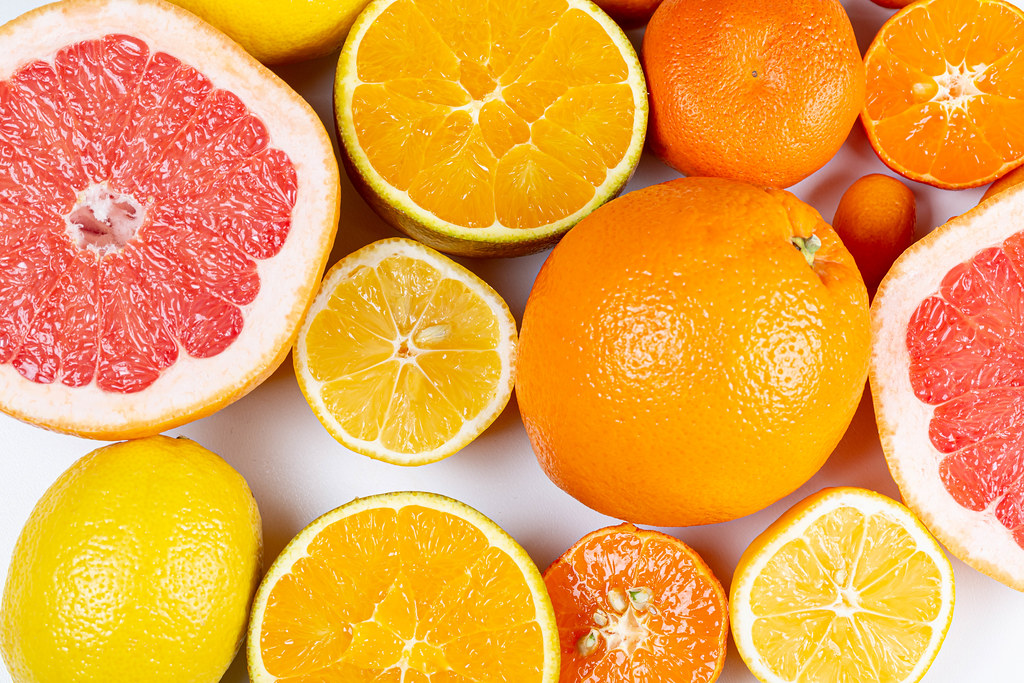
-
Citrus bioflavonoids have been shown to help regulate blood sugar levels.
-
Incorporating citrus fruits into your diet can be a tasty way to manage diabetes.
-
Understanding the types of citrus bioflavonoids can guide you in choosing the right fruits.
-
There are simple and delicious ways to include citrus in your meals and snacks.
-
Monitoring your blood sugar can help you see the benefits of adding citrus to your diet.
Unwrapping the Power of Citrus for Blood Sugar Control
When it comes to managing diabetes, every bite counts. That’s why the zesty world of citrus fruits can be more than just a treat for your taste buds; it’s a powerful ally in your blood sugar control arsenal. Let’s peel back the layers on how these fruits can help you keep your blood sugar in check.
What Are Citrus Bioflavonoids?

Imagine your body as a bustling city, with traffic lights and signals keeping everything moving smoothly. Citrus bioflavonoids act like these signals, helping to regulate the flow of sugar into your bloodstream. Found in the colorful skins and juicy insides of citrus fruits, these natural compounds have antioxidant properties that can influence the way your body metabolizes glucose.
Most importantly, citrus bioflavonoids are not just one thing; they’re a group of plant-derived substances, each with its own special way of contributing to your health. Think of them as a team, where players like hesperidin, naringin, and rutin work together to help your body function better.
How Do They Impact Blood Sugar?
Here’s where it gets exciting. Citrus bioflavonoids have been studied for their role in improving insulin sensitivity. This means they can help your body’s cells respond better to insulin, the hormone that regulates blood sugar levels. By enhancing this sensitivity, citrus bioflavonoids can help keep your blood sugar levels steady after meals.
But that’s not all. These bioflavonoids also have anti-inflammatory effects, which are crucial because chronic inflammation is a known troublemaker in the development of insulin resistance and type 2 diabetes. By fighting inflammation, citrus bioflavonoids can help protect your body’s insulin-producing cells and support overall diabetes management.
Citrus Bioflavonoids and Diabetes: A Natural Symbiosis
Diving into the Science
The relationship between citrus bioflavonoids and blood sugar control is more than just a hunch—it’s backed by science. Clinical studies have shown that these compounds can positively affect blood sugar levels and insulin sensitivity. For example, naringin, found in grapefruit, has been observed to decrease blood sugar levels in animal studies.
It’s not just about lowering blood sugar, though. These studies also suggest that citrus bioflavonoids can help reduce the risk of diabetes-related complications, like heart disease and nerve damage, by improving blood vessel function and providing antioxidant protection.
Therefore, it’s clear that these natural components of citrus fruits could be a game-changer in diabetes management. They’re like the unsung heroes, working behind the scenes to keep your blood sugar levels in harmony.
Types of Citrus Bioflavonoids Beneficial for Diabetics
Let’s zoom in on the MVPs—the specific types of citrus bioflavonoids that can make a difference in your diabetes care plan:
-
Hesperidin: Abundant in oranges and lemons, hesperidin can improve blood vessel function and has anti-inflammatory properties.
-
Naringin: This bioflavonoid, which gives grapefruit its bitter taste, is known for its ability to enhance insulin sensitivity.
-
Rutin: Found in various citrus fruits, rutin can help strengthen blood vessels and may reduce the risk of complications like retinopathy.
By focusing on these bioflavonoids, you’re not just eating fruit; you’re strategically selecting the best players to join your diabetes management team.
Easy Citrus-Inclusive Meals and Snacks

Adding a splash of citrus to your meals isn’t just about flavor—it’s a step towards better blood sugar control. Start your day with a glass of water with fresh lemon juice to awaken your metabolism. For breakfast, top your whole-grain toast with avocado and a few orange slices. Snack on a small handful of almonds paired with a tangerine for a midday energy boost. And at dinner, brighten up your grilled chicken with a squeeze of lime and a side of mixed greens sprinkled with grapefruit pieces. These simple tweaks to your diet can make a significant impact on your diabetes management.
When to Enjoy Citrus for Maximum Effect
Timing is everything, and this holds true for consuming citrus fruits as well. Enjoy them as part of a balanced meal to help slow down the absorption of sugar. A grapefruit with breakfast or an orange with lunch can help you avoid the midday slump. And don’t forget about fiber! The soluble fiber in citrus can help control blood sugar spikes, so eat the whole fruit instead of just drinking the juice.
Besides that, citrus fruits can be a refreshing post-exercise snack. After a workout, your body is better at using insulin, and the natural sugars from the fruit can help replenish your energy stores without causing a spike in your blood sugar.
Moving Beyond Oranges: Variety in Citrus Choices
Oranges and lemons are great, but there’s a whole world of citrus out there to explore. Each type offers its unique blend of bioflavonoids and other nutrients, so why not mix things up? Branch out to kumquats, which you can eat whole—skin and all—for a burst of tangy flavor and fiber. Or try a pomelo, the largest of the citrus fruits, with a sweeter and milder taste than grapefruit. And don’t overlook the ugli fruit, a Jamaican tangelo that’s as distinctive in flavor as it is in appearance. By diversifying your citrus intake, you’re not only tantalizing your taste buds but also giving your body a broader range of blood sugar-balancing benefits.
Exploring Less Common Citrus Fruits
While oranges and grapefruits are staples, there’s a bounty of lesser-known citrus fruits that can add variety and new flavors to your diet. Ever heard of a Buddha’s hand? This unique fruit is all rind and pith, making it low in sugar but high in aromatic oils and bioflavonoids. Or perhaps the sweet, round kumquat, which can be eaten whole for a quick and easy fiber-rich snack. And let’s not forget the yuzu, with its distinct tart flavor, commonly used in Japanese cuisine to add zest to dishes. By exploring these less common options, you’re expanding your palate and your health benefits.
Citrus Bioflavonoid Supplements: Are They Worth It?
“While whole fruits are the best source of bioflavonoids, supplements can be a convenient alternative for those who struggle to include enough citrus in their diets.”
Supplements can be helpful, especially if you have dietary restrictions or a hectic lifestyle that makes it challenging to consume a variety of fruits. However, it’s essential to choose a high-quality supplement and to consult with your healthcare provider before starting any new supplement regimen. Remember, supplements should complement, not replace, a healthy diet.
Also, keep in mind that bioflavonoid supplements can vary widely in their composition and potency. Look for products that specify the type and amount of bioflavonoids they contain, and opt for brands that have been independently tested for quality and purity.
Monitoring Your Progress: The Impact on Blood Sugar Levels
Self-Testing and Tracking
As you introduce more citrus into your diet, it’s crucial to monitor how it affects your blood sugar levels. Self-testing with a glucose meter is a straightforward way to keep track. Test before and about two hours after eating citrus-containing meals to see how your body responds. This immediate feedback can help you adjust your intake accordingly.
Keeping a food diary can also be beneficial. Write down what you eat, how much citrus you’re consuming, and your blood sugar readings. Over time, you’ll be able to spot trends and understand how different types of citrus affect you personally.
Recognizing Patterns and Adjusting Intake
After a few weeks of tracking, you might notice patterns. Maybe your blood sugar levels are more stable on days when you have citrus with your meals, or perhaps you find that certain types of citrus work better for you than others. Use this information to fine-tune your diet. If you see that your blood sugar spikes with orange juice but not with whole oranges, you might decide to stick with the whole fruit.
It’s all about finding what works for you and making informed choices. By paying close attention to your body’s signals and combining them with the delicious power of citrus, you can take control of your diabetes in a way that’s both enjoyable and effective.
FAQ: Citrus Bioflavonoids and Diabetic Health
1. Can Citrus Bioflavonoids Replace My Diabetes Medication?
While citrus bioflavonoids have beneficial effects on blood sugar levels, they should not be seen as a replacement for diabetes medication. They are a supplement to a well-rounded diabetes management plan that includes medication, diet, exercise, and regular monitoring of blood sugar levels. Always consult with your healthcare provider before making any changes to your medication regimen.
2. Are There Any Side Effects or Allergic Reactions to Citrus I Should Know About?
Citrus fruits are generally safe for most people. However, some individuals may experience allergic reactions or heartburn from citrus fruits, especially if consumed in large quantities. It’s also important to note that grapefruit can interact with certain medications, potentially leading to adverse effects. If you have concerns about allergies or medication interactions, speak with a healthcare professional.
-
Consult with a healthcare provider before adding grapefruit to your diet if you are taking prescription medication.
-
Start with small amounts of citrus to test for any allergic reactions.
-
Be aware of symptoms like itching, hives, or digestive discomfort, which could indicate an allergy.
3. How Much Citrus Should I Incorporate into My Diet?
The amount of citrus you should incorporate into your diet can vary based on individual health needs and dietary preferences. A general guideline is to aim for at least one serving of citrus fruits per day. This could be an orange, a grapefruit, or a couple of tangerines. Remember to account for the carbohydrates in citrus fruits as part of your overall carb intake for the day.
It’s essential to balance citrus intake with other nutrients to ensure a well-rounded diet. If you’re unsure about the right amount for you, a dietitian can help you create a personalized meal plan that includes citrus fruits in appropriate portions.
4. What Diabetic Complications Can Citrus Bioflavonoids Help Manage?
Citrus bioflavonoids may help manage several diabetic complications by improving blood vessel function, reducing inflammation, and providing antioxidant protection. These effects can potentially reduce the risk of:
-
Cardiovascular disease, by improving blood flow and reducing arterial stiffness.
-
Retinopathy, by strengthening blood vessels in the eyes.
-
Neuropathy, by protecting nerve cells from oxidative stress.
While citrus bioflavonoids can support overall health, they are not a cure for diabetic complications. Managing blood sugar levels and following your healthcare provider’s advice remains the cornerstone of preventing and managing these conditions.
5. Can I Benefit from Citrus Bioflavonoids if I’m at Risk for Diabetes?
Yes, if you’re at risk for diabetes, incorporating citrus bioflavonoids into your diet may help prevent or delay the onset of the disease. These compounds can improve insulin sensitivity and help regulate blood sugar levels, which are critical factors in preventing type 2 diabetes. Including citrus fruits in a diet rich in whole foods and low in processed sugars can be part of a preventive health strategy.


